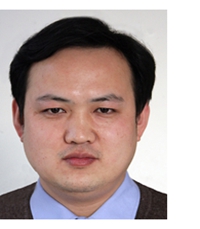| Opinion |
| A Driving Force for Progress | |
| Lan Xinzhen | |
|
|
 A nation's economic and social development requires high-skilled human resources in the form of scientists, engineers, managerial personnel, teachers and others of their ilk. This is the foundation for scientific and technological takeoff, industrialization, and also the whole society's progress. A nation's economic and social development requires high-skilled human resources in the form of scientists, engineers, managerial personnel, teachers and others of their ilk. This is the foundation for scientific and technological takeoff, industrialization, and also the whole society's progress.The past seven decades have seen China's transformation from a poor and underdeveloped country into the world's second largest economy, with people's living conditions dramatically enhanced. The rise of China is based on rising productivity spurred by talent dividends as well as scientific and technological progress, with improved education at the root of all of them. Before the founding of the People's Republic of China in 1949, there was a serious shortage of educational resources and talents due to almost 100 years of semi-colonial rule and instability. Seventy years ago, the enrollment rate for primary schools was below 20 percent, while 80 percent of the population were illiterate. The Central Government put the development of education at the center of nation-building and a large number of state-run schools were established. A new, unified school education system took shape in 1951. By 1965, the enrollment rate for primary schools had reached 85 percent. The government also made great efforts to address illiteracy among the adult population. From 1949 to 1965, the illiteracy rate fell to 38.1 percent, further declining to 18 percent in 1978. The Compulsory Education Law was promulgated in 1986, guaranteeing children and adolescents' right to compulsory education with a legal framework. In 1989 came the Hope Project to help students from impoverished families return to class by financing needy students and school construction through social fundraising. This made the nine-year compulsory education basically accessible across the country, including remote areas inhabited by ethnic minorities. Compulsory education not only helped improve the literacy of the population but also injected human resources into economic and social development. China's status as a manufacturing power grew from personnel equipped with required skills and talent. In 1987, the 13th National Congress of the Communist Party of China prioritized the development of science and technology as well as education. The concepts of science and technology being the primary productive forces and building world-class universities have become a consensus. Education facilities, teachers and teaching concepts were greatly upgraded. Tele-education as well as audiovisual education and computer education became popular not only in universities, but also in primary and middle schools around the country. School facilities, textbooks and teachers' competence have since improved dramatically. In 2016, the Department for Education of the UK spent £41 million ($50.2 million) to import Shanghai's education model, and 8,000 middle and primary schools in the UK were asked to adopt Shanghai's model of math teaching. In March 2017, the UK's HarperCollins signed a deal with China's Shanghai Century Publishing (Group) Co. to publish Chinese elementary teaching materials in the UK, showing the international community's strong interest in China's education model. The level of higher education is an important gauge of a nation's comprehensive national strength. The gross enrollment rate in universities in 2018 surpassed 48 percent, with more people with university or college degrees entering the workforce. Some academic areas in China are regarded as world-class. A lot of universities are cooperating with businesses and knowledge is being effectively transformed into productive forces. China's achievements in information technology, high-speed railway and nuclear power are also attributable to Chinese higher education, which trains talents in sci-tech research and development capability and strong innovative ability. Chinese students have been studying in world-class universities abroad, and on returning home, contribute to social and economic progress. In December 1978, the first batch of 52 students were sent to the United States under government scholarships. In the following decades, educational ties between China and the rest of the world have played an important role in broadening the horizons of educators and students, and promoting innovation. The national goal of modernization is inseparable from education. Giving strategic priority to education is the fundamental route to realize this goal. China has followed this route in the past seven decades and will continue to do so in the future. Copyedited by Sudeshna Sarkar Comments to lanxinzhen@bjreview.com |
|
||||||||||||||||||||||||||||||
|